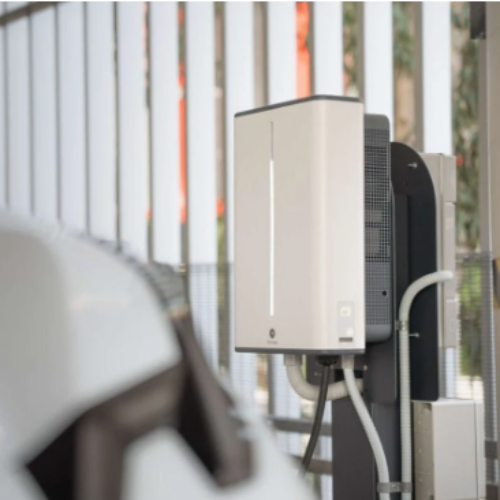Matt Davies, director of Octopus Energy’s charging network platform Octopus Electroverse, questions the methodology used to track EV chargepoint deployment in the UK, which could be counted at over 100,000 already.
Something remarkable is happening on Britain’s roads. In just the past six months, a new public EV charger has been installed every 13 minutes. Battery electric vehicle sales have soared, pushing the UK ahead of Germany as Europe’s largest market for the first time. With high-powered charger installations growing by more than 90%, long-distance electric travel is becoming the new normal.
As momentum grows, so does scrutiny. EV infrastructure has become a national talking point, drawing attention from policymakers, media, developers, and operators alike. At the heart of this conversation lies one critical metric: the number of public chargepoints. It has become the benchmark for tracking progress and a figure of how far the transition has come.
Reaching 75,000 chargepoints nationwide was widely welcomed – and rightly so. Milestones like this signal real progress, showing that the UK is investing in the future, building trust, and encouraging more drivers to switch to electric. But what if one of our most commonly cited metrics has been giving us a distorted picture all along?
The EV milestone that’s misleading
Here’s what often gets overlooked: the 75,000 figure only tells part of the story. For years, the UK has tracked progress by counting the number of physical charger devices installed, treating each charger as one “chargepoint,” no matter how many vehicles it can actually serve.
Today, tens of thousands of modern devices come with several connectors allowing more than one car to charge at the same time. When we count these connectors, known as Electric Vehicle Supply Equipment (EVSE) instead of just the boxes in the ground, the UK’s real charging capacity jumps to over 100,000 electric vehicles that can charge at the same time. That’s a boost of over a third in usable infrastructure – and a much more accurate reflection of what’s truly available to drivers.
That experience is what really counts. Current reporting methods focus on what’s installed, not what’s usable. At some busy charging hubs, for example, there may be multiple high-speed units – but only a handful of parking bays. As a result, chargers sit idle while drivers queue. These pinch points aren’t captured by today’s data, but are crucial to paint a full picture. They create a disconnect between what the numbers suggest and what drivers actually encounter on the road.
The UK’s counting disconnect
The UK is one of the few countries still using a device-based method to track public charging infrastructure. In contrast, the United States and the EU count EVSEs. This approach is already embedded in national policies, industry frameworks, and investment models elsewhere. European countries have adopted this method to enable consistent reporting, transparent benchmarking, and better allocation of public funds. In the US, federal programmes and state-level initiatives rely on connector-based data to ensure infrastructure meets driver needs effectively.
If the UK doesn’t align with this international standard, we’re not just undercounting—we’re distorting the comparison entirely. In doing so, we’re holding back recognition of how far ahead we actually are. It means UK progress appears slower than it really is, both to investors and international observers.
The need for a smarter framework
Over the next five years, the number of EVs on UK roads is expected to soar from 1.3 million today to 7 million. If we base critical infrastructure decisions on incomplete data and weak methodology, we risk fundamentally distorting our understanding of future demand, from inaccurate demand forecasts to poor investment decisions.
That’s why we need better, standardised data that must underpin the next phase of the UK’s EV rollout. We need a national framework that reflects the real-world functionality of the charging network – how many cars can plug in at once, how fast they can charge, how reliable the service is, and whether drivers can easily access it. It also means factoring in physical access, like parking availability, and service performance over time. These are the insights that should guide infrastructure investment, local planning, and grid upgrades.
The UK’s EV transformation is real and accelerating. But to sustain that momentum, we need data that reflects the real driving experience. When we count what really counts, we can build what truly works: a smart, accessible, and reliable network that powers every journey and brings everyone along for the ride.





